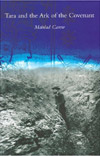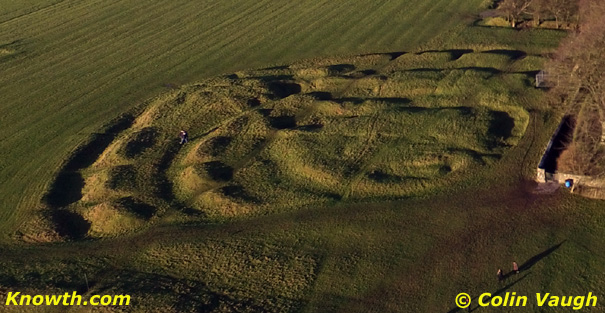Professor Seán P Ó Ríordáin excavated the Rath of the Synods in 1952. The dig revealed it to be a multi-purpose site with ritual, domestic and industrial uses between AD100 and AD300. It is interesting to note that during that time a round house on the site had been built and re-built many times. A banqueting hall perhaps? We do not know. Evidence was found that these 'houses' were used for both domestic and ritual purposes. The post-holes that were discovered indicate a resemblance to the round, thatched reconstructions of similar finds at places like Lough Gur in Co Clare.
Objects found at the site include a Roman lock and pottery which may date to AD200. Ó Ríordáin came to the following conclusions about his excavation work at the site: 'The dwellers at Tara were in touch with the Roman world. The site was inhabited and evidences were available of ordinary domestic and industrial activities - iron smelting and enamelling, for instance. But there are special features which suggest a ritual purpose and most remarkable are the re-buildings, each of which made the site larger and more impressive and which may have coincided with special events in the history of Tara.
At least three Church Synods are said to have taken place here and are referred to in a poem probably dating from the early eleventh century. There is no record of when the first two meetings took place. But historians give a probable date of AD697 for the Synod of Adamnán, when Irgalach was king of the area around Tara. Prior to the erection of the church wall in the nineteenth century, the rath clearly extended into what is now the churchyard, and included in the list of monuments associated with this spot are a number that bore the name of St Adamnán, who was a powerful ecclesiastical personage of the seventh century and a biographer of St Columcille.
The Tent of Adamnán, the Seat of Adamnán and the Mound of Adamnán - all were associated with the Rath of the Synods and with earthwork mounds that have been identified inside the cemetery area by aerial photography. The last monument, the Cross of Adamnán, is thought by some to refer to the tall standing stone on the left of the path through the church-yard. This ancient stone has the figure of a small child carved on it, and it could be the shaft of St Adamnán's 'cross'.
Extract from The Book of Tara by Michael Slavin. A well presented book covering the Neolithic period Mound of the Hostages, the Celts who were responsible for most of the earth works on Tara, Myth & Legends of Tara and the current landscape. Michael lives at Tara and his enthusiasm and love of the place jumps from the pages.
Purchase at Amazon.com or Amazon.co.uk
 Tara and the Ark of the Covenant by Mairéad Carew covers a search for the Ark of the Covenant by British-Israelites.
They dug the Hill of Tara in their quest to find the Ark of the Covenant between the years 1899 and 1902.
What were their reasons for doing so, and were they successful? And what was the "Great Irish-Hebraic-cryptogramic
hieroglyph" and the Freemason connection?
Tara and the Ark of the Covenant by Mairéad Carew covers a search for the Ark of the Covenant by British-Israelites.
They dug the Hill of Tara in their quest to find the Ark of the Covenant between the years 1899 and 1902.
What were their reasons for doing so, and were they successful? And what was the "Great Irish-Hebraic-cryptogramic
hieroglyph" and the Freemason connection?
Purchase at Amazon.com or Amazon.co.uk
Boyne Valley Private Day Tour
 Immerse yourself in the rich heritage and culture of the Boyne Valley with our full-day private tours.
Visit Newgrange World Heritage site, explore the Hill of Slane, where Saint Patrick famously lit the Paschal fire.
Discover the Hill of Tara, the ancient seat of power for the High Kings of Ireland.
Book Now
Immerse yourself in the rich heritage and culture of the Boyne Valley with our full-day private tours.
Visit Newgrange World Heritage site, explore the Hill of Slane, where Saint Patrick famously lit the Paschal fire.
Discover the Hill of Tara, the ancient seat of power for the High Kings of Ireland.
Book Now
Home
| Newgrange
| Knowth
| Dowth
| Hill of Tara
| Fourknocks
| Loughcrew
| More Places
| Labyrinths
| Local Info
| Art Works
| Articles
| Images
| Books
| Links
| Boyne Valley Tours
| Contact

